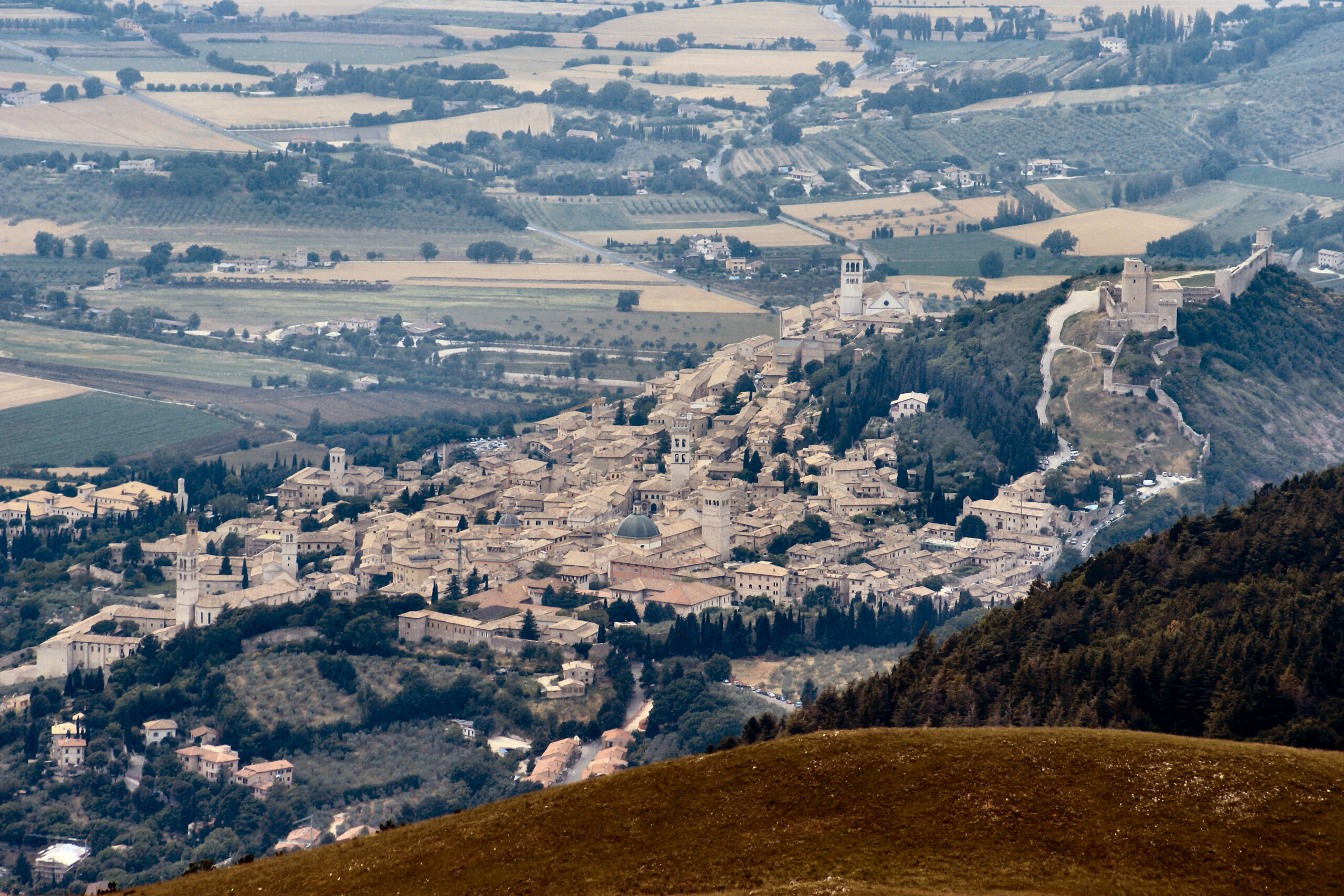Assisi
Assisi, whose original name was Asisium, is a city of Roman origin; many monuments remain to testify the Roman rule on the city, such as the facade of the Temple of Minerva, the Amphitheater, the Walls, the Forum.
After the fall of the Roman Empire, the city became a settlement of the Goths (in 545) and then of the Lombards.
During Middle Ages, Assisi gained its indipendence as a municipality and experienced an extraordinary development, especially thanks to the monastic movements who settled there (especially the Benedictines).
The history of the town took a turn thanks to a fact that will forever change the course of events: the advent, in 1182, of Francis, born according to tradition in a stable not far from the Town square. He will be proclaimed Saint in 1228, two years after his death, by Pope Gregory IX, becoming one of the pivotal figures of the Catholic world.
Later on, the city fell under the rule of the lordships of many rulers, such as Gian Galeazzo Visconti, the family of Montefeltro, Braccio Fortebraccio and Francesco Sforza; during the mid-sixteenth century, the whole region of Umbria was definitively brought back under Vatican City control by Pope Paul III.
During the nineteenth century, the city became part of the recently constituted Italian state.
The territory of Assisi has been for centuries a favourite destination for religious tourism.: in the past, many pilgrims came from Italy and Europe to visit Saint Francis’ birthtown, while today the city is visited by tourists from all over the world, offering different activities that allow the spiritual immersion of the individual in that Nature so much praised by Francis: among these, for example, the Eremo delle Prigioni, Mount Subasio and the recent Bosco di San Francesco.
The main sanctuaries of the city are the Basilica of San Francesco, the church of Santa Chiara, the Basilica of Santa Maria degli Angeli and the Sanctuary of Rivotorto.
The territory also preserves castles and defensive fortresses.











